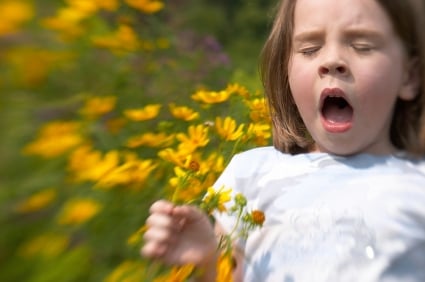You finally have the chance to cradle your bundle of joy for the first time and you find yourself in awe at the little miracle of life in your arms. The thrill of holding your child–regardless of whether adopted or biological–is something that first-time parents may have trouble describing. Happy is probably an understatement especially for those who have been waiting a while to become parents. That is why it is understandable for these parents to freak out when their child comes down with something like allergies or a cold.
Differentiating Between a Cold and an Allergy
Although the symptoms of colds and allergies might be similar, there are clear distinctions that will allow you to determine what is ailing your child. For allergies, there is itching repetitive sneezing and the mucus will be thin and clear. Fever is usually absent and symptoms last more than two weeks. Colds on the other hand only run at most two weeks. The latter’s symptoms may sometimes include fever, occasional sneezing and thick yellow mucus.
The Most Common Type
Allergies can appear as early as the first few months or years in a child’s life. By the time he or she is 2-3 years old, he or she can start exhibiting symptoms of airborne or food allergies. Among all allergies, Allergic Rhinitis–airborne allergies which include both indoor and seasonal–is the most common allergy problem. A stuffy or runny nose is to be expected as well as coughing and sneezing. Children with this type of allergies may experience itchy or watery eyes as well as dark circles under their eyes, as their stuffy nose causes them to wake frequently, disrupting of the quality of their sleep. Chronic ear problems is another possible symptom.
Possible Allergy Triggers
To solve any problem, it is important to get to the root of it. Same goes for allergies; you need to learn what triggers your children’s allergies so that you can avoid them or at least minimize contact with them. Dust mites is one of the most common allergy triggers that can be found indoors and these thrive where house dust abounds. The droppings of these microscopic creatures can trigger year-round allergies, which can be a miserable experience for your child. Other common allergy triggers include pollen, molds, mildew and even pet dander.
Allergy Strategy
The best way to treating allergies in babies is through avoidance of trigger substances. If you feel that allergies is the reason behind your child’s health problem, consult a pediatrician or an allergist who can help you determine what exactly your son or daughter is allergic to.. For dust mite allergy, it is best to keep your home as dust-free as possible. Dusting should be done at least once a week, or more frequently if possible. To thoroughly remove allergens from your home, it helps if you invest in an intelligent vacuum cleaner designed to do just exactly that. Browse through sites like Neato Robotics, which offer robot cleaners geared for those with pets or with allergies. It’s also best if you use dust mite and allergy control casings for your child’s pillows and mattress. Weekly washing of beddings in hot water can also help reduce dust mites.
If your child has pollen allergy, keep him or her inside during days or hours when pollen count is at its peak. Make sure your air conditioner filters are cleaned every week. If your child is allergic to mold, you have to rid your house of indoor plants and other sources of mildew. Leaks should be repaired promptly including cracks in the walls and leaky pipes. Keep humidity inside your home low by using the air conditioner or a dehumidifier. Don’t let your child play in piles of fallen leaves in autumn because they could be hiding molds.
Although allergies may not always be prevented, the least you can do as a parent is to do your best to reduce the risk of your child developing them.

